
The Victoria and Albert Museum in London is the world's largest museum of applied arts, decorative arts and design, housing a permanent collection of over 2.27 million objects. It was founded in 1852 and named after Queen Victoria and Prince Albert.

A diving suit is a garment or device designed to protect a diver from the underwater environment. A diving suit may also incorporate a breathing gas supply, but in most cases the term applies only to the environmental protective covering worn by the diver. The breathing gas supply is usually referred to separately. There is no generic term for the combination of suit and breathing apparatus alone. It is generally referred to as diving equipment or dive gear along with any other equipment necessary for the dive.

Kotka is a city in the southern part of the Kymenlaakso province of Finland. Located on the Gulf of Finland, Kotka is a major port and industrial city and also a diverse school and cultural city, which was formerly part of the old Kymi parish; later, Kymi with the Haapasaari island and Karhula, the latter of which was once separate from Kymi as the market town, were incorporated into Kotka. The neighboring municipalities of Kotka are Hamina, Kouvola and Pyhtää. Kotka belongs to the Kotka-Hamina subdivision, and with Kouvola, Kotka is one of the capital center of the Kymenlaakso region. It is the 19th largest city in terms of population as a single city, but the 12th largest city of Finland in terms of population as an urban area.
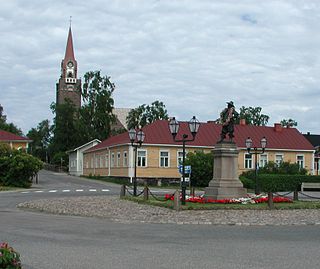
Raahe is a town and municipality of Finland. Founded by Swedish statesman and Governor General of Finland Count Per Brahe the Younger in 1649, it is one of 10 historic wooden towns remaining in Finland. Examples of other Finnish historic wooden towns are Kaskinen (Kaskö), Old Rauma, Porvoo (Borgå), Jakobstad (Pietarsaari), and Vaasa (Vasa). After a devastating fire in 1810, Raahe was rebuilt adhering to new design principles which minimized the risk of fire and enlarged some civic spaces. Old Raahe is noted for its Renaissance-inspired rectilinear town plan featuring an unusual central-square with closed corners.

Reading Museum is a museum of the history of the town of Reading, in the English county of Berkshire, and the surrounding area. It is accommodated within Reading Town Hall, and contains galleries describing the history of Reading and its related industries, a gallery of artefacts discovered during the excavations of Calleva Atrebatum, a copy of the Bayeux Tapestry, finds relating to Reading Abbey and an art collection.

The National Archaeological Museum of Naples is an important Italian archaeological museum, particularly for ancient Roman remains. Its collection includes works from Greek, Roman and Renaissance times, and especially Roman artifacts from the nearby Pompeii, Stabiae and Herculaneum sites. From 1816 to 1861, it was known as Real Museo Borbonico.
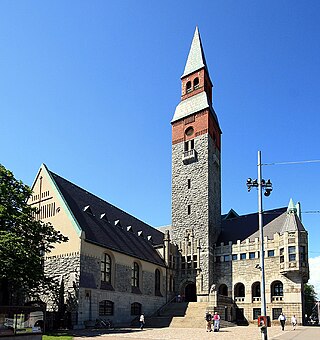
The National Museum of Finland is a museum in Helsinki presenting Finnish history from the Stone Age to the present day, through objects and cultural history. The Finnish National Romantic style building is located at Mannerheimintie 34 in central Helsinki and is a part of the Finnish Heritage Agency, under the Ministry of Culture and Education.

The culture of Estonia combines an indigenous heritage, represented by the country's Finnic national language Estonian, with Nordic and German cultural aspects. The culture of Estonia is considered to be significantly influenced by that of the Germanic-speaking world. Due to its history and geography, Estonia's culture has also been influenced by the traditions of other Finnic peoples in the adjacent areas, also the Baltic Germans, Balts, and Slavs, as well as by cultural developments in the former dominant powers, Sweden, Denmark and Russia. Traditionally, Estonia has been seen as an area of rivalry between western and eastern Europe on many levels. An example of this geopolitical legacy is an exceptional combination of multiple nationally recognized Christian traditions: Western Christianity and Eastern Christianity. The symbolism of the border or meeting of east and west in Estonia was well illustrated on the reverse side of the 5 krooni note. Like the mainstream cultures in the other Nordic countries, Estonian culture can be seen to build upon ascetic environmental realities and traditional livelihoods, a heritage of comparatively widespread egalitarianism arising out of practical reasons, and the ideals of closeness to nature and self-sufficiency.
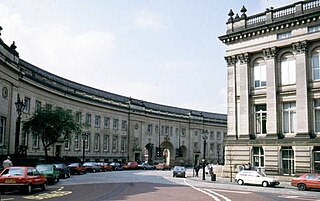
Bolton Museum is a public museum, aquarium and art gallery in the town of Bolton, England, owned by Bolton Metropolitan Borough Council. The museum is housed within the grade II listed Le Mans Crescent near Bolton Town Hall and shares its main entrance with the central library in a purpose-built civic centre. The building has good accessibility.

The Harris Museum is a Grade I-listed building in Preston, Lancashire, England. Founded by Edmund Harris in 1877, it is a local history and fine art museum.
The history of rail transport in Finland began on January 31, 1862, with the opening of the railway line between Helsinki and Hämeenlinna. By 1900 most of the future main lines had been constructed, including the line to St. Petersburg. By the time of the birth of the new Finnish Republic in 1917 lines connected all major cities, major ports, and reached as far as the Swedish border, and inner Finland as far north as Kontiomäki in Paltamo region, as well as eastwards into Karelia.
The town of Limantepe, sometimes spelled Liman Tepe, located on Turkey's western coast is the site of a prehistoric settlement that includes an ancient port dating from 2500 years located underwater offshore. The area is situated in the urban zone of the coastal town of Urla near İzmir. In pre-classical antiquity and during the Hellenistic and Roman eras, it was a Greek town called Larisa.

The Per Brahe statue is a monument of Per Brahe the Younger, the Governor-General of Finland and first chancellor of the Academy of Turku, located in Brahenpuisto in Turku, Finland. It was designed by Walter Runeberg and unveiled in 1888.
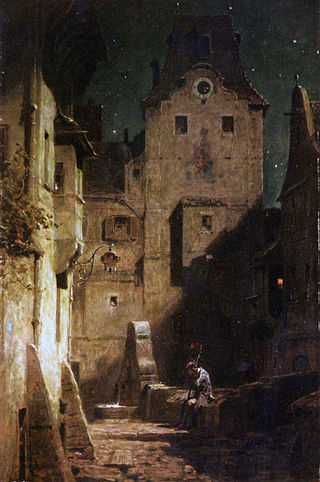
The Kurpfälzisches Museum is a museum of art and archaeology in Heidelberg, Germany. It is located in the Palais Morass. It was founded in the late 1870s, when the city of Heidelberg purchased the private collection of the artist and art historian Charles de Graimberg.

The Antonino Salinas Regional Archeological Museum is a museum in Palermo, Italy. It possesses one of the richest collections of Punic and Ancient Greek art in Italy, as well as many items related to the history of Sicily. Formerly the property of the Oratory of Saint Philip Neri, the museum is named after Antonino Salinas, a famous archaeologist and numismatist from Palermo who had served as its director from 1873 until his death in 1914, upon which he left it his major private collection. It is part of the Olivella monumental complex, which includes the Church of Sant'Ignazio all'Olivella and the adjoining Oratory.
The San Fernando Naval Museum is a naval museum located in San Fernando in the Province of Cádiz, Andalusia, Spain. Although a naval museum was called for as early as 28 September 1792. A museum was established in 1843, but the current museum was inaugurated on 27 March 1992, with the main purpose to promote the history of the presence of the Spanish Armada in the area.

The Sinebrychoff Art Museum is an art museum located on Bulevardi in Helsinki, Finland. The museum exhibits the old European art collections of the Finnish National Gallery. In addition, half of the museum acts as a historic house museum, displaying the 19th century estate of the Sinebrychoff family.

The Museum of Cieszyn Silesia in Cieszyn is one of the oldest public museums in Central Europe and the oldest public museum in Poland, set up by father Leopold Jan Szersznik in 1802.

The Åland War was the operations of a British-French naval force against military and civilian facilities on the coast of the Grand Duchy of Finland in 1854–1856, during the Crimean War between the Russian Empire and the allied France and Britain. The war is named after the Battle of Bomarsund in Åland. Although the name of the war refers to Åland, skirmishes were also fought in other coastal towns of Finland in the Gulf of Bothnia and the Gulf of Finland.
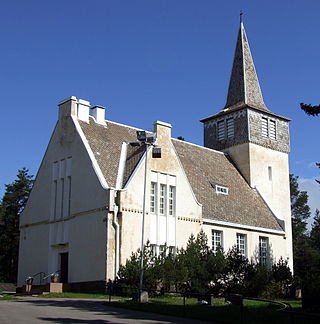
Pattijoki is a settlement and former municipality in Finland. It was a part of the Oulu Province, but now located in the region of Northern Ostrobothnia. It was consolidated with the town of Raahe in 2003.


















